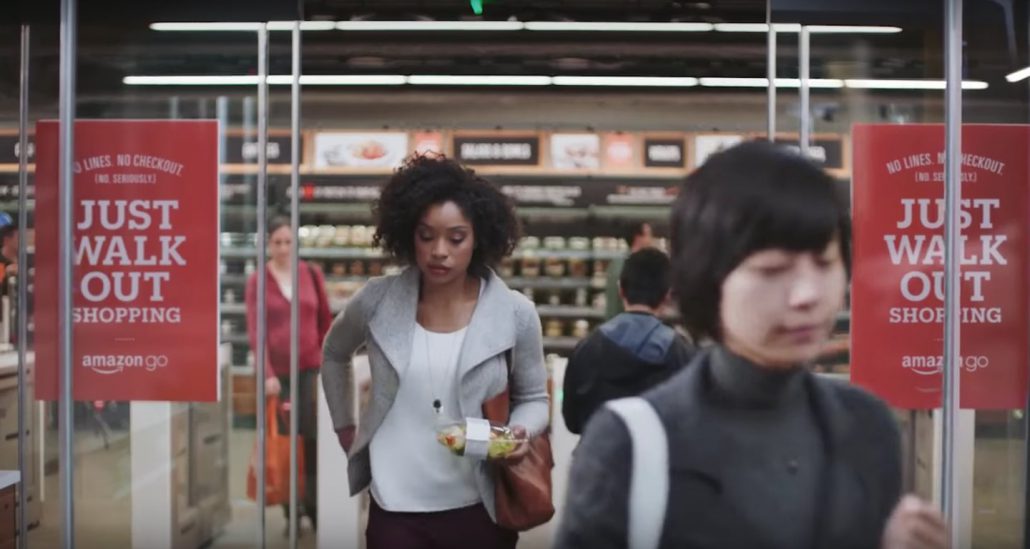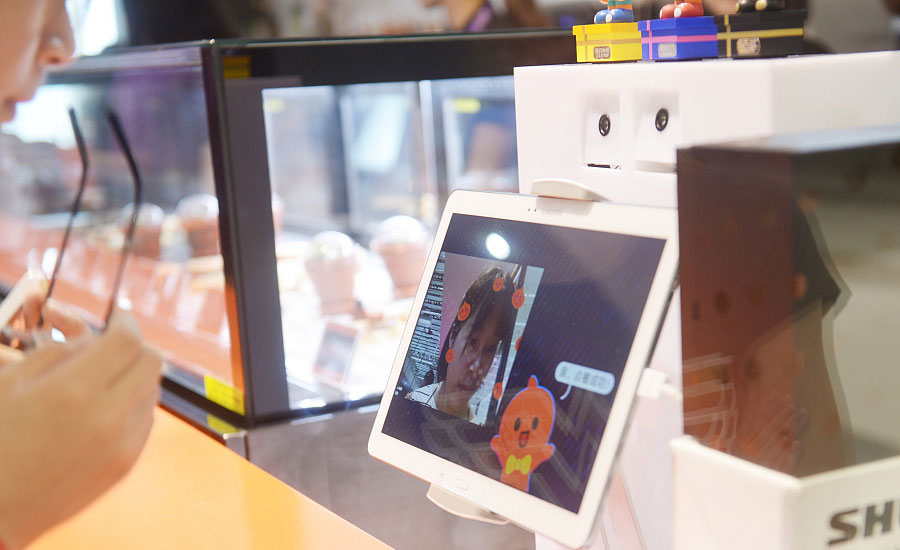- Innovation at the point of sale – a journey around the world - 21. December 2017
- Performance-Tracking meets User Journey - 19. July 2017
- Connected Retail – Customer Centricity Meets Store - 9. June 2017
- Fear not! Connected Retail in Four Steps - 13. October 2016
By Björn Portillo, Managing Partner at hmmh
Several years ago, experts predicted the end of over-the-counter trade. That is to say, it would not be able to exist alongside online trade in this new digital world. However, this viewpoint has once again shifted as connected commerce concepts are slowly but surely taking hold. Previous online “pure players” such as notebooksbilliger.de or mymuesli have even set up stationary concept stores, and now find themselves in the product ranges of large retail chains. But what are the reasons behind this change, and which innovations are bringing retail back into the game?
In order to understand the “how” and “why” of this paradigm shift, we are embarking on an economic and cultural journey that will take us to the USA and China, before returning to Germany.
Packing our bags in Germany
Many companies and agencies have worked hard to promote technical development and harness innovations to simplify our day-to-day lives. Concepts for interactive consultancy solutions, as well as mobile consulting via smartphone, mobile payment or augmented and virtual reality, are well-developed enough for implementation in stores. But these opportunities are often not exploited in this country. Why is this? Is it down to retailers who ignore the potential due to traditional reasons? Or perhaps it is a scepticism of all things new and a distrust of technology itself? Are German store owners, their customers, or even both, wary of innovation?
The risk-averse, conventional German likes to carry out research and product comparisons, particularly online. The product and the context then determine where they make purchases – sometimes online, sometimes offline. A decisive factor is that they feel well-advised and well-informed, and that they are able to closely examine their desired product.
Technical hurdles and a lack of acceptance
Not only do traditional retailers need to offer a range of products that is varied and constantly available – they must also provide the right setting for brands and products in order to present these to each customer. However, attempts to implement connected commerce concepts often fall at the first hurdle – Internet access for the customers. Furthermore, the use of different systems that cannot be easily combined is another reason why retailers are often faced with such great challenges. That makes it difficult for retailers to recognise their customers, and impossible to collect relevant data, offer comprehensive advice or provide a quick and simple payment process. Except for a few individual examples.
A further challenge: although German consumers place great importance on being able to test their desired product – ideally even trying it out in a private setting – and also expect comprehensive individual consultation, they are often not willing to share their personal information.
Off to the USA
The land of opportunity – is this also the case when it comes to store innovations? If so, which developments have already taken hold? With a significantly higher population across a land area 25 times the size of Germany, it is difficult for us to sum up the average US citizen. What we can say, however, is that the average citizen is open to new things, thinks practically and is always on the lookout for a bargain. They like to use their credit card at the small business around the corner, and their thick coupon booklet is the most valuable companion when it comes to the weekly shop. Perhaps the most important drivers of innovation are the thriftiness and desire for convenience of the American people.
Ideas are tested and optimised
Every day, new concepts emerge that are aimed at giving US citizens the shopping experience that they want. At the end of 2016, Internet giant Amazon opened its Amazon Go grocery store in Seattle, where customers do not need to wait in queues or make physical payments. All thanks to a motion detection system installed in the store – the so-called “Just walk out technology”. Payments are via PayPal and the Amazon.com account. However, the store is closed for the time being due to technical issues with the motion detection and tracking of more than 20 customers at the same time.

Amazon Go – Shopping without having to queue up at the checkout: just walk into the store, put the item in your bag and then leave. Source: Amazon
This example shows that not everything needs to go to plan first time round for innovative companies. Whereas in Germany it is frowned upon to make mistakes – which means that attempts are not even made to try and establish new concepts – the successful principle of “trial and error” applies over in the USA. Courage is rewarded.
US retailers know what their customers need
In contrast to the cautious mentality of German offline retailers, the US market offers numerous examples of its digital transformation. For example, the retail giant Walmart is buying up online shops and start-ups, and in doing so is making strides towards e-commerce. The other big player in the stationary retail sector, Target, offers its customers a practical app that not only allows them to manage coupons easily using their smartphone, but also provides them with in-store navigation to show the direct route to the desired product. Other concepts are already being tested. Unrestricted data allowances in mobile phone contracts are making it much easier to use these services.
“Whether it be artificial intelligence in the form of multiple interfaces, robots in the store, speech assistance through in-ear consultants or delivery to your front door without you even needing to be in: these trends in the US market are not necessarily compatible with the German market due to the differing mentality of consumers”, explains Nicolas Roemer, Chief Business Development Officer at Serviceplan US.
Moving onto China
Anyone who has visited China will be aware of the people’s affinity for technology, and their group-oriented way of thinking. They will also have an image of the typical urban landscape before their eyes: millions of people on the streets with their smartphones out enjoying unlimited data volumes. Driven by progress and further development, new concepts catch on quickly in this society.
A step ahead when it comes to innovations
For years, retailers that have also enjoyed success with e-commerce have been looking for ways to combine the online and offline worlds with one another. Pioneers on the market such as Alibaba.com recognised the unfolding “mobile boom” in China, and came up with concepts to match the mentality and the new purchasing behaviour of the Chinese people. The result was futuristic stores with sophisticated technology. For example, a self-service store called “BingoBox” was opened in China’s Guangdong province. Although nowhere near as complex and extensive as the Amazon Go store, it was adapted to the demand for mobile shopping. As the Amazon Go store was being trialled in the USA, Alibaba.com was already introducing a sophisticated variant of the fully-automated store concept in China: the “Tao Cafe”. Here, customers can log in with their smartphones and pay at the checkout cash-free thanks to facial recognition.

Tao Cafe – purchasing through facial recognition: The cash-free café combines automatic optical sensors and facial recognition for quick payment. Source: VCG Photo or CNR
The era of staff-free shopping
Cash-free stores and automated services have become part of everyday life in Chinese shopping centres, as quick payment via smartphone continues to boom: 6 in 10 customers now pay for their shopping using their phone. This represents great potential for Chinese retailers. Payment service providers have a good understanding of Chinese social interaction, and combine the popular payment method with social media functions. For example, users of WeChat Pay can follow the official WeChat account of the respective retailer in order to get advice or ask questions. Users can also exchange information with one another and provide recommendations. The way we see it, the retailers there seem to act like private individuals. They know that customers identify much more strongly with brands and connect a lot more emotion to them than people in Germany.
The hype surrounding mobile payment in China has been a strong driver behind the development towards connected commerce. For retailers, this method of payment not only drives revenue, but is also a new form of communication and interaction – both online and offline. A prime example of an optimal, integrated user journey.
Back to Germany with our bags full
When it comes to implementing connected commerce concepts, the Americans and Chinese in particular show us how it’s done. Apple Pay and Samsung Pay are essential for this, as are large mobile data packages at low rates, which allow 360°retailers to offer integrated services in the store via smartphone. However, German retailers still find it difficult to take this step. The seamless customer journey still has clear barriers, and customers themselves have played a part in creating these. The cautiousness of the German people, the data protection barriers and the inhibitions regarding the use of existing technology need to be dismantled. “Many German retailers feel that their hands are tied and that they are trying to perform a difficult balancing act”, reveals Björn Portillo, Managing Partner at hmmh. Here, it is important that they have the right partner by their side. They can then develop options and methods that offer consumers added value, and in return consumers will be happy to make their data available.
Whereas Germans still worry about making mistakes and therefore often act too late, a different error culture dominates in the USA. “Test, optimise, then test again – these steps are part of the innovation process and are ingrained in the mentality there”, says Nicolas Roemer, Chief Business Development Officer at Serviceplan US. “Even if a concept doesn’t quite work out and needs to be scrapped, it doesn’t mean the brand is doomed. Quite the opposite – bravery pays off.”
In China, it is the urge for progress that drives the digitalisation of over-the-counter retail. However, it does not make sense to simply copy innovations and force ourselves to apply them. “Together with retailers, we must first determine which problems of the target group we want to solve. Only then should we look at which innovations we use and how we use them, so that they actually catch on”, says Björn Portillo.
We are aware of the needs and fears of German customers, as well as the technical challenges faced by retailers, and already have approaches for individual solutions. Experienced international agencies are just waiting to be given the go-ahead.
This page is available in DE




